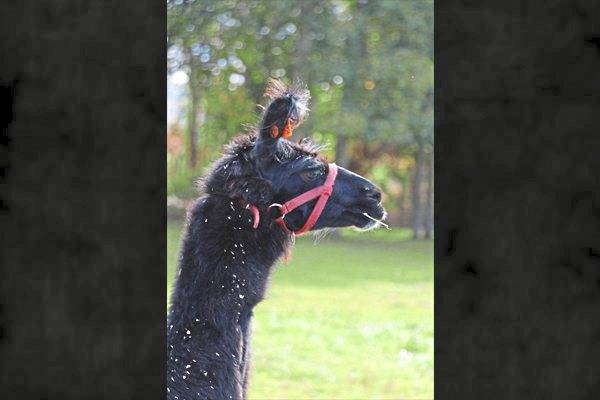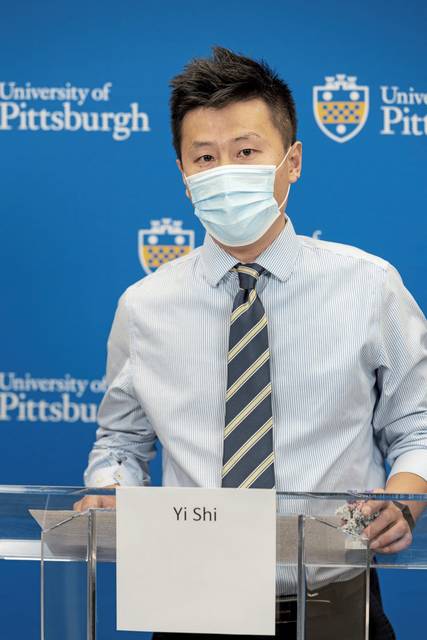Pitt scientists identify promising covid treatment derived from llamas
A breakthrough treatment for covid-19 could come from llamas, according to researchers from the University of Pittsburgh, who say the treatment has the potential to treat or even prevent the virus.
The idea involves immunizing a llama to SARS-CoV-2, the coronavirus that causes covid-19, and then harvesting what are called nanobodies — smaller and much more powerful versions of human antibodies, according to researchers. That makes them much better at neutralizing covid-19.
Humans do not produce nanobodies; in fact, the only mammals that do are llamas, alpacas and camels, according to Yi Shi, a cell biologist at Pitt and the senior author on the study, published in the journal Science.
Enter: Wally, a llama from Massachusetts. He acted as the conduit for the nanobodies. Shi and his team used covid-19 protein to immunize Wally, who got his name because of his likeness to Shi’s black Labrador retriever of the same name. Two to three months later, Wally’s immune system produced nanobodies against the virus.
From there, small pieces of those nanobodies are extracted and turned into an inhalable mist. That mist is inhaled and goes directly to the lungs, Shi said. Because covid-19 is a respiratory disease, the inhaled antibodies can then bind to the virus in the lungs, cutting down on the amount of damage the virus can do.
“As a virologist, it’s incredible to see how harnessing the quirkiness of llama antibody generation can be translated into the creation of a potent nano-weapon against (covid-19),” said Paul Duprex, a co-author on the study and director of Pitt’s Center for Vaccine Research.
Shi’s study found that nanobodies are more stable than human antibodies, and they can remain at room temperature for weeks. That stability is what makes it possible for them to be transformed into a mist.
The idea of using nanobodies is neither novel nor new, Shi said. What is new was his ability to use mass spectrometry to sort out the nanobodies in Wally’s blood that were the strongest in taking on the virus. Mass spectrometry is a process used to sort out the basic compounds of a sample, like a chemical or molecule, and Shi and his team spent three years perfecting the type of technology used to detect the strongest of Wally’s nanobodies.
Another plus, Duprex said, is that it wouldn’t take multiple llamas to make the nanobody treatment happen: Once the nanobodies are sequenced, they can be reproduced in a lab.
Working with Pitt’s Center for Vaccine Research, Shi and other researchers attacked a live sample of the covid-19 virus with Wally’s nanobodies. They found that the most minuscule amount — a fraction of a nanogram, according to researchers — could neutralize enough of the virus to keep a million cells from being infected.
Duprex said the nanobodies are versatile, and there are a multitude of possibilities. One is that they can be used as a treatment. Another, he said, “if you think rather creatively,” is the possibility that nanobodies can be used to prevent the virus from taking hold if one is exposed.
“It’s like being armed and ready to go,” Duprex said, saying to imagine you have the nanobodies and you spray and inhale them before going out. “Imagine if the nanobodies —which are really potent — are here in your upper respiratory tract and you just so happen to touch a door where there is the virus and then touch your mouth. They would be ready, aimed and able to neutralize.”
Remove the ads from your TribLIVE reading experience but still support the journalists who create the content with TribLIVE Ad-Free.



